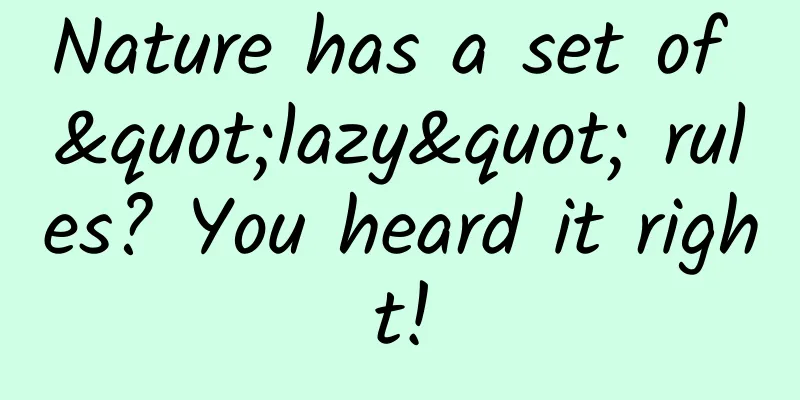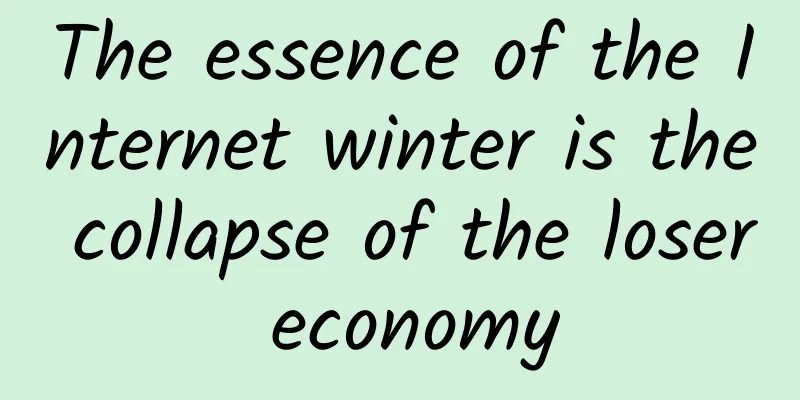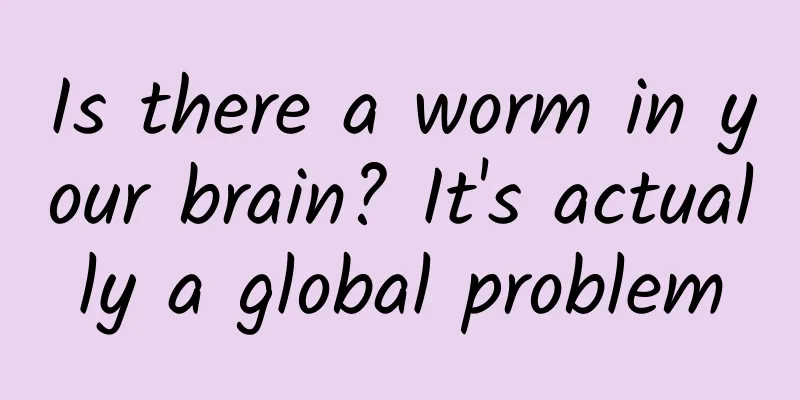Nature has a set of "lazy" rules? You heard it right!

|
1. Introduction: Nature’s mysterious “lazy” law Hey, friends! Have you ever wondered why all creatures in the world seem to have a mysterious "wisdom" when they act, which makes them always choose the easiest and most labor-saving way? This is not accidental, there is a super magical principle behind it - the principle of least action. This principle is like a "lazy" secret book of nature. Whether we humans walk, run, or birds fly and fish swim, we all follow it unconsciously. Today, let's unveil this magical principle and see how it works magic in the field of biomechanics. 2. What is the principle of least action? In order to understand the principle of least action, let us first start with the travel of light. 1. The Magical Shortcut of Light Let's first look at light. This guy is really impatient and straightforward. He always wants to "cut corners and take shortcuts". He will go straight and never take detours. There is an interesting phenomenon when light propagates in different media. For example, when it is shot from air to water, it does not go randomly. According to Fermat's principle (this is the relative of the principle of least action in optics), light will choose a path that takes the shortest time to propagate (Figure 1). It's as if light knows which path is the fastest. Isn't it amazing? Scientists have done many experiments to verify this. Figure 1 The propagation path of light when it passes through the interface of different media As time went by, scientists gradually realized that this principle of "least effort" is not only applicable to optics, but also widely exists in various phenomena in nature. For example, water droplets are usually oblate spherical, which is the result of the minimum sum of their surface potential energy and gravitational potential energy; the optimal shape of red blood cells is the result of minimizing the energy of elastic cell membrane deformation (Figure 2). Figure 2 The appearance of water droplets and red blood cells In the 18th century, French physicist Maupertuis further extended the principle of least action and applied it to mechanical systems. He proposed that for all natural phenomena, the action always tends to the minimum value. In Maupertuis' definition, the action is the product of the mass of an object, the speed of movement, and the distance moved. His theory laid the foundation for the development of the Lagrangian and Hamiltonian formulations of classical mechanics. 2. The principle of least action in mechanics So what is the principle of least action in mechanics? Imagine a small ball rolling down a hill. What path will it take to reach the bottom of the hill? It doesn't just roll randomly! It will choose a route that minimizes a certain "action" - the brachistocentre line (Figure 3). Figure 3 The brachistocentrism of the ball This action, in simple terms, is like a special quantity that combines the kinetic energy, potential energy, and motion time of the ball. And this principle is not only applicable to simple ball rolling, but also to complex mechanical systems, such as the interaction of multiple objects. Scientists have spent a lot of effort to study this principle. Through a lot of mathematical derivations and experiments, it is found that for a conservative system (that is, a system that conserves mechanical energy), the action is usually defined as the integral of the Lagrangian over time. This Lagrangian is related to the generalized coordinates, generalized velocity, and time of the object. Although it sounds a bit complicated, you just need to know that, just like light looks for the fastest way, the mechanical system is also looking for the most "cost-effective" way of movement. This is the basic logic of the principle of least action. The principle of least action states that when an object changes from one state to another, it will move along the path of least action because this is the fastest and most energy-saving way. The principle of least action is a basic principle in physics, which states that the movement or change of a physical system in nature always follows a path that makes a certain action take an extreme value (usually a minimum value). The origin of this principle can be traced back to ancient philosophical thought. For example, ancient Greek philosophers believed that natural phenomena always occur in the most economical way. In the process of scientific development, Fermat proposed the Fermat principle in optics, that is, when light propagates between two points, it always propagates along the path with the shortest optical distance (time). This is an early manifestation of the principle of least action in optics. Later, scientists such as Lagrange and Hamilton extended this principle to other fields such as mechanics. In modern physics, the principle of least action has become a panacea that can be used to explain and derive almost all physical laws. Whether it is Newton's laws in classical mechanics, Schrödinger's equation in quantum mechanics, or even Einstein's field equations in general relativity, they can all be derived through the principle of least action. It is like a key that can open the door to various complex phenomena in physics. 3. Biomechanical Principle of the Principle of Least Action 1. Nature’s “energy-saving experts” 1. The energy-saving secrets of human walking and running Have you ever wondered why sometimes walking is so easy and running is so smooth? It's not because you ate an "energy bar", but because your body is silently following the principle of least action. Scientists have found that humans have an optimal walking frequency of about 100-120 steps per minute, when energy consumption is the lowest (Figure 4). Figure 4 Rhythmic walking speed at a certain frequency It's like your system of muscles, bones, and joints are performing a carefully choreographed dance, with each step utilizing the body's energy in just the right way. Running is even more interesting. Studies have shown that when a long-distance runner maintains a certain speed, the less the fluctuation of the body's center of gravity, the lower the energy consumption. Long-distance runners will adjust their running posture and speed to achieve the best energy efficiency. They are like an energy-saving machine, making it easier for them to "fly" on the track by fine-tuning their body posture. Moreover, the stride length when running also has its own requirements. The bigger the better. The right combination of stride length and stride frequency can allow runners to run farther and faster while consuming the least energy. 2. Animals’ energy-saving secrets (1) The aerodynamic magic of bird flight. Birds are masters of flight, and the shape of their wings and their flight posture are carefully designed to save energy. Scientists have discovered through wind tunnel experiments that the upper surface of bird wings is curved, while the lower surface is relatively flat. This design allows birds to generate lift when flying, which is the Magnus effect in fluid mechanics at work. Birds will also adjust the angle of their wings according to the airflow conditions, taking advantage of rising air currents, spreading their wings and hovering, just like taking a free "elevator", saving a lot of physical energy. According to research, some migratory birds can reduce energy consumption by up to 30% during long-distance migration by making rational use of airflow. This is the reason why wild geese fly south in a V-shaped formation. (2) The miracle of insect flight. The wings of bees can vibrate hundreds of times per second. This high-frequency vibration seems to consume a huge amount of energy, but in fact, bees can accurately control the twisting and tilting angles of their wings during flight to optimize aerodynamics and reduce energy loss. They achieve efficient flight through their unique flight muscle structure and wing movement. When bees fly between flowers to collect nectar, their flight path is also to minimize unnecessary energy consumption. For example, when choosing a route to return to the hive, they will give priority to routes with short distances and stable airflow. (3) The hydrodynamic intelligence of fish swimming. The body of fish is streamlined, which can greatly reduce the resistance when swimming in water. Fish generate propulsion by swinging their tails and fins. They will adjust their swimming posture according to the speed and direction of the water flow, cleverly cope with the challenges of the water flow, and save energy to complete long-distance migration. For example, when swimming upstream, they will swing their tails more vigorously and bend their bodies slightly to reduce the impact of the water flow on the front of their bodies. Just like a flexible submarine, they can cleverly cope with the challenges of the water flow and save energy to complete long-distance migration. (4) Insect tracks. A study on the behavior of fire ants found that when fire ants pass through the surfaces of two different media, they always tend to choose the path that takes the shortest time, rather than the path that is the shortest distance. The researchers explained that fire ants rely on chemical traces to determine their routes. In the long process of evolution, they have learned to concentrate on forming the best path to save crawling time and energy. This phenomenon is very similar to the refraction of light in physics, and both are the result of following the principle of least action. 3. Why do rivers turn? A river is a natural phenomenon without life, but it also cleverly uses the principle of least action. When a river is flowing, it will be affected by many factors such as topography, geological structure, and the deflection force of the earth's rotation. These factors will cause the river to choose a path with the least resistance and the least energy consumption when flowing. Under the combined effect of these influencing factors, the river will choose a path with the least action (that is, the least resistance and the least energy consumption) to flow. Therefore, the rivers we see are often winding, which is the result of the river following the principle of least action (Figure 5). Figure 5 The bend of the river is the result of the principle of least action 4. Pulse waves in the vascular system For another example, the human cardiovascular system has a magical and efficient transport performance after a long period of evolution. The heart periodically ejects blood into the artery to form a pulse wave, which propagates along the artery to the distal end. This propagation mechanism obeys the principle of least action. The shear effect and pressure transmission effect generated during the propagation of the pulse wave directly lead to changes in the rheological properties of the blood and play a "flushing" and "sweeping" role on the blood vessels, preventing blood coagulation and blood vessel blockage, so that the vascular transport system can achieve efficient transport (Figure 6). It can be said that the human cardiovascular system uses pulse waves to reduce resistance and increase output, which is simply a stroke of genius from nature. Figure 6 Vascular system 2. Minimum Action in Motor Control: The Magical Command of the Nervous System 1. The wonderful movement of muscle synergy Our nervous system is like a super conductor, directing the coordinated performance of muscles based on the principle of least action. When we reach out to grab a cup, the seemingly simple action actually involves muscles in multiple parts of the arm, shoulder, back, etc. The nervous system will accurately "calculate" the degree and time that each muscle needs to contract, forming a specific coordinated pattern, allowing us to complete accurate movements with the least energy (Figure 7). Figure 7 Muscle synergy Research has found that in this process, muscles do not act independently, but form a specific synergistic pattern. Some muscles are responsible for the main force output, while others play an auxiliary role in stabilizing joints and adjusting posture. This synergy allows us to complete accurate movements with the least energy. Scientists have found through electromyography and other technical measurements that in skilled movements, the activation sequence and intensity of muscles have certain rules, and this rule is to reduce unnecessary energy consumption and muscle fatigue. 2. Rapid energy-saving response of motor reflex Our motor reflexes are also a magical mechanism of the nervous system based on the principle of least action. Just like when we accidentally step on something slippery, our feet will react quickly to maintain balance. This process is very fast and almost instantaneous. This quick reaction not only prevents us from falling and getting injured, but also does it in the most energy-efficient way. If you are interested, please follow my personal WeChat public account "Medical Biomechanics" for an article about the biomechanics of "the correct posture for falling on slippery roads in snowy days". Without this efficient reflex mechanism, we may consume a lot of energy to readjust our body balance when faced with emergencies, and may even get injured. 3. Biological structure and minimum action: the crystallization of evolutionary wisdom 1. The ingenious design of the skeleton Our bones are like the building framework of the body, and their structure has evolved to adapt to the principle of least action. Long bones are hollow (Figure 8). This hollow structure can greatly reduce the weight while ensuring sufficient strength to bear the weight of the body and external forces, so that during exercise, the body does not need to consume too much energy to move the "extra weight". Figure 8 The hollow structure of long bones Moreover, the density distribution inside the bone is not uniform, it will adjust according to the stress. For example, at the two ends of the femur, the density is relatively low, because it is mainly under pressure, while in the backbone part, the density is higher to withstand greater bending and torque. This ingenious design is like a carefully built energy-saving structure. 2. Efficient lubrication and force transmission of joints Joints are the "bearings" in our bodies, and their structure is also crucial for the efficient use of energy. Large joints such as the knee and hip joints have smooth joint surfaces covered with cartilage tissue (Figures 9 and 10). This cartilage acts like a natural lubricant, which can greatly reduce friction during joint movement, allowing force to be smoothly transmitted between bones, minimizing energy loss at the joints. Figure 9 Knee joint Figure 10 Hip joint (above) and ligaments around the hip joint (below) Moreover, the ligaments and muscles around the joints also play a role in stabilizing the joints and distributing force reasonably. When we exercise, force is transmitted through the joints, and the ligaments and muscles will automatically adjust according to the direction and strength of the movement, so that force can be smoothly transmitted between the bones, just like a sophisticated transmission system, minimizing energy loss at the joints. 4. Application of the principle of minimum action in rehabilitation and sports training 1. Energy optimization in rehabilitation therapy In the field of rehabilitation therapy, the principle of minimum action also has important applications. For patients recovering from a leg fracture, early rehabilitation training will not allow patients to perform excessive high-intensity exercise, because that may consume a lot of energy and may cause secondary damage to the injured part. Instead, it will start with some simple, low-energy movements, such as joint range of motion training in bed. When standing or doing yoga, the muscles of the legs, waist, and back work together to maintain the body's balance (Figure 11). The activation pattern and degree of contraction of these muscles are adjusted according to the principle of least action, minimizing the total energy required to maintain balance. Figure 11 Muscle coordination movements in yoga training 2. Effective strategies for sports training In sports training, coaches also use the principle of least action to improve the training effect of athletes. Coaches use high-speed cameras, motion sensors and other equipment to analyze the running posture of athletes (Figure 12), find out possible energy waste points, and make targeted adjustments to the training to make the athletes' movements more coordinated and energy-efficient. Figure 12 Motion capture system For example, if an athlete swings his arms too much when running, it will increase the up and down movement of the body, leading to increased energy consumption. The coach will make targeted adjustments to the training to make the athlete's movements more coordinated and energy-efficient. IV. Conclusion: Minimum Action - The Wisdom of Nature The principle of least action is a profound and interesting principle. It occupies a central position in nature (including social phenomena). Through our wonderful exploration, do you have a deeper understanding of the magical performance of the principle of least action in biomechanics? From our daily activities, to the unique survival skills of animals, to the exquisite design of our body structure and its application in rehabilitation and sports training, this principle runs through them like an invisible thread. It is the clever wisdom of nature's "laziness", allowing all things to survive and develop in the most energy-saving and efficient way in this challenging world. I hope that in the future, when you see yourself or other creatures in action, you can remember this magical principle of least action and feel the magical charm of nature. Moreover, perhaps with the further development of science, we can discover more secrets hidden in this principle and bring more surprises to human health and development! |
>>: When we played music on a mountain destroyed by fire, something magical happened
Recommend
Fengjie teaches you how to write 10w+ stories
Fengjie’s article became popular. The article &qu...
How to use Xiaohongshu’s algorithm mechanism for oral medical beauty marketing and promotion?
If medical beauty marketing is limited to product...
Why are Capybaras so keen on rolling in the mud in the hot summer?
Yeah? Which two little guys are standing on the r...
Is event planning and promotion really as simple as you think?
[Introduction] Recently, due to the impact of the...
Why does Sony so cautious about the Chinese version of "Ratchet & Clank" for PS4, even conducting a closed-door test?
There have been many reports that Uncharted 4 wil...
Your color is quite nice! Do "chameleons" really exist among fish?
Produced by: Science Popularization China Author:...
The Douyin system operation guide summarized after a loss of 200,000!
Long article warning: This article is the product...
The latest situation of the epidemic in Changsha, Hunan in 2022: Is it a high-risk area or low-risk? Can I go now?
Since March 14, Changsha has reported a total of 1...
Pilots are not allowed to have scars, but why can injured pilots continue to fly?
As we all know, the medical examination for pilot...
3,000 km "Green Great Wall"? China's largest desert is surrounded! | Environmental Trumpet
Hello everyone, this is the 24th issue of the Env...
Zhao Dongxuan: Business model + implementation case analysis
Course Catalog├──1 -Course Study Guide, must read ...
Xiaomu C4D Product Rendering 2021 Redshift Course [HD Quality with Materials]
Xiaomu C4D Product Rendering 2021 Redshift Course...
Japan's nuclear waste water is discharged into the sea. Will the octopus on the table become "hundred-clawed fish"?
On August 4, 2022, CCTV News reported that the pl...
Brand Marketing: 8 Failure Experiences of New Brands!
I have been writing less recently, which has led ...
It’s the peak of the new semester, beware of this virus! Many places have issued warnings!
Recently, the COVID-19 epidemic situation in Chin...









